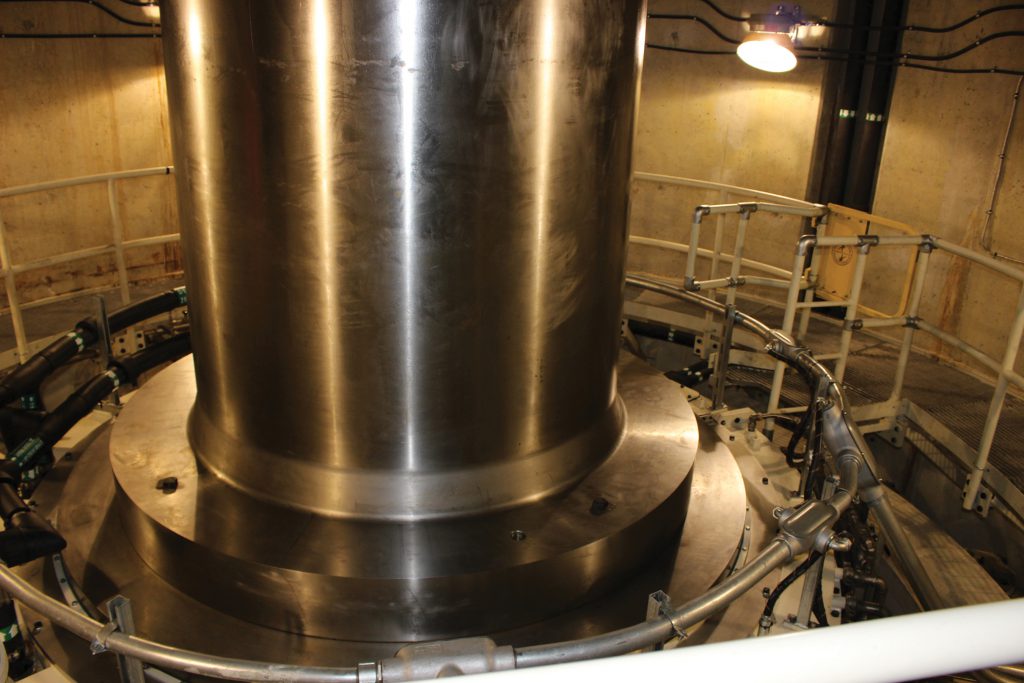Living together on the land in harmony
Wi taski win
From coast-to-coast, Canada is a country steeped in rich aboriginal culture. The Canadian constitution recognizes three distinct groups of aboriginal people — First Nations, Inuit and Métis, which includes 617 different “bands” or communities (according to Aboriginal Affairs and Northern Development Canada). Each group comes with its own unique history, language and beliefs. They also have a deeply rooted relationship with the land as displayed elegantly in the Cree Nation phrase wi taski win, which means “living together on the land in harmony” or “peace place.”
Kiewit has been operating in Canada since the 1940s with a long and successful history of consulting and engaging with the First Nations and other aboriginal groups. Across the country, Kiewit’s projects demonstrate the benefits that can be gained from a positive and productive relationship between industry and First Nations people.
“It has been humbling to see what can be accomplished when dedicated men and women work together towards a common goal — we have built friendships, businesses and careers,” said Simon Gagné, project manager with the Kiewit-Alarie Partnership (KAP). The team is responsible for updating obsolete hydroelectric facilities at the Lower Mattagami River Project in northern Ontario and is a great example of how Kiewit’s partnerships with First Nations and other aboriginal groups have evolved to focus on lasting benefits to the communities in which we operate.
The strength and quality of the relationships between KAP, Ontario Power Generation (OPG) — the contractor and operator of the complex — and the Moose Cree First Nation have emerged as the driving force behind the project’s success. Lower Mattagami is located in Moose Cree traditional territory on the west side of James Bay in the heart of the Hudson Bay lowlands. It’s a testament to Kiewit’s belief that proactive First Nations and aboriginal engagement can create profound results. According to Gagné, “Working as one team, the Moose Cree, KAP and OPG have built an incredible infrastructure that will outlive all of us involved.”
The Amisk-oo-skow Agreement
The project is bound by The Amisk-oo-skow Agreement made between the Moose Cree and OPG. In the Cree language, amisk-oo-skow means “plenty of beaver.” The name reflects the abundance of natural resources within the Moose Cree’s traditional territory and their fundamental belief in sharing the land and its resources. Signed in 2010, the agreement provides ongoing economic benefit to the Moose Cree community through equity ownership, employment and business opportunities. The Moose Cree see it as a way to honor their ancestors by continuing their practice of sharing — to give and receive while ensuring their traditional lands are protected through strict environmental rules and regulations.
Success stories
At the heart of this success story is the relationship between KAP and the Moose Cree, including Kiewit’s commitment to professional development of Moose Cree members who have worked on the project. Since it started in 2010, a total of 412 First Nations and aboriginal people from the Moose River Basin (including Moose Cree, Taykwa Tagamou, Mocreebec and Métis) have worked for KAP. An additional 255 First Nations and aboriginal people from outside the Moose River Basin have also worked on the project. Of particular significance, 95 First Nations members have taken part in apprenticeship and tradesperson/journeyperson programs, including electricians, carpenters, plumbers, pipefitters, welders and heavy equipment operators.
Certain commitments were put in place to ensure Moose Cree members were benefiting from the direct and indirect advantages of employment, including specialized training programs from local community training centers, on-site and on-the-job training, and exposure to trade unions. KAP exceeded its employment commitments by more than doubling targeted “person-years” — a measurement of how much work or labor is used to perform a task — in this case, the person-years completed by Moose Cree members. KAP also surpassed subcontracting commitments of First Nations-owned enterprises with around 30 Moose Cree-owned businesses providing their services to the project with a total of $333 million in contracts awarded. The economic benefit to the Moose Cree community as a result of the Lower Mattagami River Project has been substantial.
For all staff and craft labor on the project (both First Nations and non-First Nations), a cross-cultural two-way training initiative developed and helped promote a safe and respectful workplace that recognized the Cree culture. Marie-Lou Sutherland, a Moose Cree member and First Nations Relations Manager for the project, considers the program and relationship between KAP and the Moose Cree as “very good with a high degree of consultation and keeping the members aware.”
Along with professional development, personal lives can be positively affected while staying true to traditional values. Wendell Hardisty has lived in Moose Cree territory his entire life and is a long-time security staff member at the project. According to Wendell, “Exposure to benefits like life insurance, medical and dental coverage, taking care of yourself financially and considering savings and retirement has been eye-opening for a lot of members.”
KAP also offered an on-site program tailored to meet the needs of First Nations members interested in working toward their high school diplomas.
“The number of people that went through so many hours of training, apprenticeships, journeyperson certifications, Grade 12 continuing education, even the experience of working on the project, have all been benefits,” said Harry Rickard, First Nations relations manager, Aboriginal advisor for KAP and a Moose Cree Member. A foundation of skilled craftspeople has been built in support of social and economic development within the Moose Cree community.
What the future holds
The success of the Lower Mattagami River Project and the experience the Moose Cree First Nation has had with their corporate partners has led them to explore additional opportunities within their traditional lands. According to Moose Cree member Bruce Nelson, environmental assessment site coordinator for the Moose Cree First Nation, “This is a new experience for the Moose Cree. The successes we’ve achieved are remarkable and we are proud to be a part of it.”
The Moose Cree divide the year into six seasons (Fall, Freeze up, Winter, Spring, Break up and Summer). The length of each season is determined by the weather, moon cycle, availability of berries and other food staples for harvesting, and the traditional activities that take place during each season.








